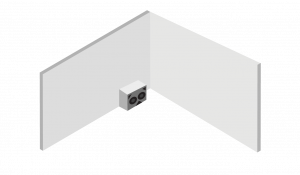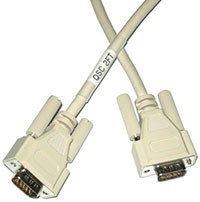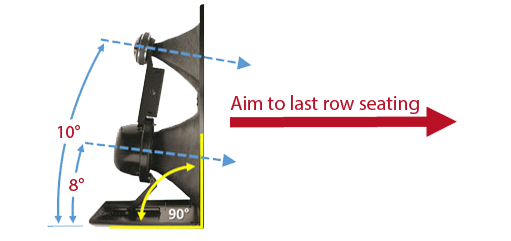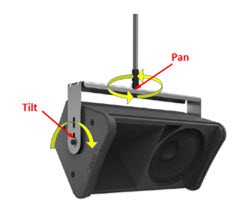Since QSC has been a major player in the cinema audio industry for over 35 years, you can imagine we’ve curated a healthy dose of technical tips worth sharing. Let’s take a quick look at a few topics we get asked about frequently.
What is “Free Loading”?

To take advantage of free acoustical power: always place subwoofers on the floor behind the screen – NOT on a platform with the screen loudspeakers. Floor-positioned subwoofers take advantage of “half-space” loading, which increases radiated power by about 3 dB, WITHOUT adding any extra amplifier power.
Even better: place the subwoofers on the floor AND push them all the way back against the solid wall behind the screen. That is called “quarter space” loading, and results in about 6 dB greater SPL, without using a larger amplifier. The very low frequencies produced by the subwoofers have no problem going right through any draping or masking below the screen.
Can I Use Standard VGA Cables for Dataport?

It may look like any old VGA video connector, but it’s not. DCA and ISA Series amplifiers and DCP, DCM, and DXP processors use a special QSC connection interface called DataPort. This enables DSP crossovers, loudspeaker-specific EQ, and monitoring and control of amplifier and loudspeaker functions on a single cable. Although many off-the-shelf VGA cables may work with satisfactory results, the QSC DataPort specification requires all 15 pin conductors be present, and all audio I/O conductors be shielded. Many VGA cables use only 7 pins. If pins 5 or 10 are tied to ground, you may damage the amplifier. Therefore, only QSC supplied DataPort cables should be used.
Screen Channel Loudspeakers – No Tilt Required

The mid-high frequency section of most 3- and 4-way QSC screen channel loudspeakers has a pre-set downward tilt. When it is properly elevated to approximately 5/8 image height behind the screen, and aimed to the last row in a typical stadium-style cinema, there is no need for additional downward tilt. This allows you to minimize the distance from the horn to the screen, and keep it flush within a baffle wall.
Surround Loudspeakers – What Does “Axisymmetric” Coverage Really Mean?

All QSC SR Series surround loudspeakers feature Axisymmetric coverage. That means sound is distributed evenly on all axes within the loudspeaker’s defined coverage angle. Unlike many conventional loudspeakers, there is no vertical and horizontal coverage pattern, so aiming is much easier. Up/down tilt and side-to-side “pan” aiming is all that is needed to cover any area in a cinema.
Feel free to chime in with a question of your own in the comments section below. We’ve got a team of experts who are eager to help.
